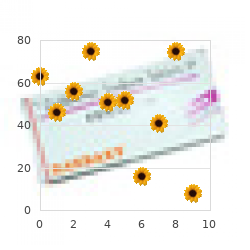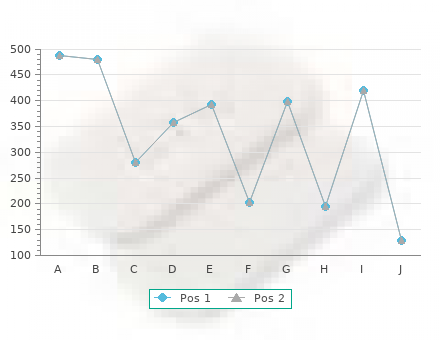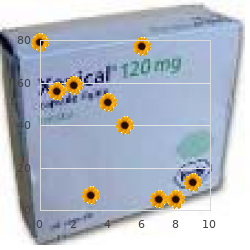Hoodia
By V. Georg. University of South Carolina, Aiken.
This lesion m ay be encountered in infection by Schistosom a m ansoni safe hoodia 400 mg herbals that reduce inflammation, S. The lesion does not necessari- ly progress any further. A, M esangial proliferative glom eru- The two lesions in panels C and D are associated with advanced lonephritis. N ote the crucial role of the portal vein hepatic fibrosis, which 1) induces glom eru- lar hem odynam ic changes; 2) perm its schis- Egg granulomata Egg granulomata tosom al antigens to escape into the system ic in the portal tracts in the colonic mucosa circulation, subsequently depositing in the glom erular m esangium ; and 3) im pairs clearance of im m unoglobulin A (IgA), M ucosal Switching which apparently is responsible for progres- Autoimmunity Antigens breach sion of the glom erular lesions. IgA synthesis seem s to be augm ented through B-lym pho- cyte switching under the influence of inter- IgG,M ,E Immune complexes IgA leukin-10, a m ajor factor in late schistoso- m al lesions. Impaired macrophage function Periportal fibrosis Portosystemic collaterals Glomerular deposits B A C FIGURE 6-36 (see Color Plate) Renal am yloidosis in schistosom iasis. A, Schistosom al granulom a (top), three glom eruli with extensive am yloid deposits (bottom ), and dense interstitial infiltration and fibrosis in a patient with m assive Schistosom a haem atobi- um infection. The m onocyte Interleukin-1,6 Hepatocyte continues to release interleukin-1 and interleukin-6 under the influ- + Antigen ence of schistosom al antigens. These antigens stim ulate the hepato- cytes to release AA protein, which has a distinct chem oattractant function. The m onocyte is the norm al scavenger of serum AA pro- Uptake tein, a function that is im paired in hepatosplenic schistosom iasis. AA protein Serum AA protein accum ulates and tends to deposit in tissue. M atrix adhesion Tissue deposition Chemoattraction Toxic Tropical Nephropathies Toxins of Animal Origin FIGURE 6-38 NEPHROPATHIES ASSOCIATED W ITH EXPOSURE TO ANIM AL TOXINS N ephropathies associated with exposure to toxins of anim al origin. N ote that acute renal failure is the m ost com m on and Acute renal failure Vasculitis Subnephrotic proteinuria Nephrotic syndrome im portant renal com plication. Vascular and glom erular lesions are occasionally encoun- Snake bite +++ + + (MPGN) tered with specific exposures [56–62]. Scorpion sting + Insect stings + ++ (MCD, MPGN, MN) Jelly fish sting + Spider bite + Centipede bite + Raw carp bile ++ MCD— minimal change disease; MN— membranous glomerulonephritis; MPGN— mesangial proliferative glomeru- lonephritis; +— <10%; ++— 10%–24%; +++— 25%–50%. The im m ediate effect of Snake venom exposure is attributed to direct hem atologic toxicity involving the coagulation system Direct toxicity Immunologic reaction and red cell m em branes. The m assive release of cytokines and rhabdom yolysis also contribute. Late effects m ay be encoun- Disseminated Hemolysis Cytokines tered as a consequence of the im m une intravascular Rhabdomyolysis M ediators M esangiolysis response to the injected antigens. N ote that with the exception of Djenkol bean nephrotoxicity, Acute renal failure Hypertension Proteinuria Hematuria m ost plant toxins lead to acute renal failure due to hem odynam ic effects [63–66]. Djenkol bean +++ ++ +++ ++++ Mushroom poisoning + + Callilepis laureola +++ Semecarpus anacardium + +— <10%; ++— 10%–24%; +++— 25%–49%; ++++— 50%–80%. Acknowledgment The authors acknowledge the help of Professor Am ani Am in University, for providing very valuable m aterial included in Solim an, Chairperson of the Parasitology Departm ent, Cairo this work. Giacom ini T, Toledano D, Baledent F: The severity of airport m alaria. Vanherweghem JL: A new form of nephropathy secondary to the Im m unol 1996, 156: 4318–4327. In D iseases of the from m etacestodes of Echinococcus m ultilocularis. Clark IA: Suggested im portance of m onokines in pathophysiology 31. Klin W ochenschr 1982, lonephritis associated with acute toxoplasm osis. Kidney Int 1996, glom erulonephritis in inbred rats infected with Trypanosom a rhode- 50:920–928. Khajehdehi P, Tastegar A, Karazm i A: Im m unological and clinical responses to trypanosom al antigens and total IgM levels.

Given these uncertainties about the meaning of MRI actually measure changes in either glucose metabolism the signal at a neuronal level generic 400 mg hoodia herbals aarogya, the validity of functional imag- or physiologic parameters coupled to glucose metabolism ing as a tool for studying mental processes has been largely such as blood flow and volume (1). A major limitation in established based on agreement with prior expectation from interpreting functional imaging is that the relationship be- psychological paradigms (3,5). It differs by allowing the measurement of the concen- cesses are involved in short-term neuronal information trations and synthesis rates of individual chemical com- transfer, and the relative distribution of energy among them pounds within precisely defined regions in the brain. There is also uncertainty as to basis of its chemical specificity is that the resonance fre- how the different classes of neurons in a region contribute quency of an MRS active nucleus depends not only on the to the overall energy consumption. While an increase in the local magnetic field strength, but also on its chemical envi- imaging signal is usually assigned to an increase in neuronal ronment, a phenomenon referred to as chemical shift. MRS measurements of the 1H nucleus are the most commonly excitation, this interpretation is confounded by both inhibi- used for in vivo studies due to 1H being the most sensitive nucleus present in biological systems. Metabolites that can be measured by 1H MRS include aspartate, -aminobutyric Douglas L. Shulman: Yale University School acid (GABA), glucose, glutamate, glutamine, and lactate. These metabolites play critical roles in neuroenergetics, Nicola Sibson: University of Oxford, Oxford, United Kingdom. KlineInstitute forPsychiatric Research,Orangeburg, amino acid neurotransmission, and neuromodulation. Schematic representations of the glutamate/glutamine cycle between neurons and astrocytes and the detoxification pathway of glutamine synthesis. A: The glutamatine/glutamate cycle between neurons and astrocytes. Released neurotransmitter glutamate is transported from the synaptic cleft by surrounding astrocytic end processes. Once in the astrocyte, glutamate is converted to glutamine by glutamine synthetase. Glutamine is released by the astrocyte, trans- ported into the neuron, and converted to glutamate by phosphate-activated glutaminase (PAG), which completes the cycle. B: Including the ammonia detoxification (or anaplerotic) pathway of glutamine synthesis. The net rate of glutamine synthesis reflects both neurotransmitter cycling (Vcycle) and anaplerosis (Vana). The stoichiometric relationships required by mass balance between the net balance of ammonia and glutamine and Vana are given in Eq. C: An alternative model for neuronal glutamate repletion in which the astrocyte repletes the lost neuronal glutamate by providing the neuron with -ketoglutarate [or equivalently other tricarboxylic acid cycle (TCA) intermediates] (32–34). Glc, glucose; a-KG, -ketoglutarate: Vtrans, net rate of net ammonia transport into the brain (VNH4 in the text); Vefflux, rate of glutamine efflux from the brain; Vana, anaplerotic flux; V , rate of the glutamate/glutamine cycle; V , rate of glutamine synthesis. Using [2-13C] cycle gln glucose (27) and [2-13C] acetate precursors these pathways may now be distinguished. The natural abundance of the 13C isotope is This chapter reviews these findings and discusses some of 1. Substrates labeled with for studying neurotransmitter systems of approximately 1 13 to 4 mm3 in animal models and 7 to 40 mm3 in human the nonradioactive, stable, C isotope have been employed in vivo to study metabolic flux, enzyme activity, and meta- brain. Even in the best case the MRS signal is the sum of bolic regulation in the living brain of animals and humans the signal from a large number of neurons and glia including (6–39). Enhanced sensitivity may be achieved by measuring many different subtypes. Fortunately, nature has localized the 13C enrichment of a molecule through indirect detection key enzymes and metabolites involved in neurotransmitter through 1H MRS. From these measurements the flux cycling in specific cell types, which greatly simplifies the through specific metabolic pathways may be calculated (17, interpretation of the MRS measurements. As with any new tech- and the relationship of amino acid metabolism to functional nique there are still uncertainties due to methodologic is- neuroenergetics.

B generic 400mg hoodia herbs on demand coupon, In the early stage the deposits are small and without other capillary wall changes; hence, on light microscopy, glomeruli often are normal in appearance. C, O n electron m icroscopy, sm all electron-dense E deposits (arrows) are observed in the subepithelial aspects of capillary walls. D, In the intermediate stage the deposits are partially encircled FIGURE 2-15 (see Color Plate) by basem ent m em brane m aterial. E, W hen viewed with periodic Light, im m unofluorescent, and electron m icroscopy in m em bra- acid-m ethenam ine stained sections, this abnorm ality appears as nous glom erulonephritis. M em branous glom erulonephritis is an spikes of basem ent m em brane perpendicular to the basem ent im m une com plex–m ediated glom erulonephritis, with the im m une m em brane, with adjacent nonstaining deposits. Sim ilar features deposits localized to subepithelial aspects of alm ost all glom erular are evident on electron m icroscopy, with dense deposits and inter- capillary walls. M em branous glom erulonephritis is the m ost com - vening basem ent m em brane (D). Late in the disease the deposits m on cause of nephrotic syndrom e in adults in developed countries. This schem atic illustrates the sequence of im m une deposits in red; base- m ent m em brane (BM ) alterations in blue; and visceral epithelial cell changes in yellow. Sm all subepithelial deposits in m em branous glom erulonephritis (predom inately im m unoglobulin G) initially form (A) then coalesce. BM expansion results first in spikes (B) and later in dom es (C) that are associated with foot process effacem ent, as shown in gray. In later stages the deposits begin to resorb (dotted and crosshatched areas) and are accom panied by thickening of the capillary wall (D). This schematic illustrates the clinical 80 Dead/ESRD evolution of idiopathic membranous glomerulonephritis over time. Almost half of all patients Nephrotic syndrome 60 undergo spontaneous or therapy-related remissions of proteinuria. Another group of patients Proteinuria (25–40% ), however, eventually develop chronic renal failure, usually in association with per- 40 sistent proteinuria in the nephrotic range. The first, known as m em branoproliferative (m esangiocapillary) glom erulonephritis type I, is a prim ary glom erulopathy m ost com m on in children and adolescents. The 1 sam e pattern of injury m ay be observed during the course of m any 2 diseases with chronic antigenem ic states; these include system ic 3 lupus erythem atosus and hepatitis C virus and other infections. In m em branoproliferative glom erulonephritis type I, the glom eruli 4 are enlarged and have increased m esangial cellularity and variably increased m atrix, resulting in lobular architecture. The capillary 5 walls often are thickened with double contours, an abnorm ality 6 resulting from peripheral m igration and interposition of m esangium (A). Im m unofluorescence discloses granular to conflu- ent granular deposits of C3 (B), im m unoglobulin G, and im m unoglobulin M in the peripheral capillary walls and m esangial regions. The characteristic finding on electron m icroscopy is in the C capillary walls. C, Between the basem ent m em brane and endothe- lial cells are, in order inwardly: (1) epithelial cell, (2) basem ent FIGURE 2-18 (see Color Plate) m em brane, (3) electron-dense deposits, (4) m esangial cell cyto- Light, im m unofluorescence, and electron m icroscopy in m em bra- plasm , (5) m esangial m atrix, and (6) endothelial cell. Electron- noproliferative glom erulonephritis type I. In these types of dense deposits also are in the central m esangial regions. The electron-dense deposits m ay contain an organized depressed levels of serum com plem ent C3. The m orphology is var- (fibrillar) substructure, especially in association with hepatitis C ied, with at least three pathologic subtypes, only two of which are virus infection and cryoglobulem ia. A, The capil- lary walls are thickened, and the basem ent m em branes are stained intensely positive periodic acid–Schiff reaction, with a refractile appearance. B, O n im m unofluorescence, com plem ent C3 is seen in all glom erular capillary basem ent m em branes in a coarse linear pattern. W ith the use of thin sections, it can be appreciated that the linear deposits actually consist of two thin parallel lines. C, Ultrastructurally, the glom eru- lar capillary basem ent m em branes are thickened and darkly stained; there m ay be segm ental or extensive involvem ent of the basem ent m em brane. Patients with dense deposit disease frequently show FIGURE 2-19 (see Color Plate) isolated C3 depression and m ay have concom itant lipodystrophy.
These compounds are safe and effective for treating cologic studies purchase 400 mg hoodia fast delivery herbals for prostate. Longitudinal studies have found that as ADHD in children, adolescents, and adults (8,9). Studies of clinically referred ness, hyperactivity, and impulsivity, stimulants also improve associated behaviors, including on-task behavior, academic performance, and social functioning in the home and at school. In adults, occupational and marital dysfunction tend Stephen V. Farone: Pediatric Psychopharmacology Unit, Child Psychia- try Service, Massachusetts General Hospital; Harvard Medical School; Massa- to improve with stimulant treatment. There is little evidence chusetts Mental Health Center; Harvard Institute of Psychiatric Epidemiology of a differential response to methylphenidate, pemoline, and and Genetics, Boston, Massachusetts. The average response rate for each is Joseph Biederman: Pediatric Psychopharmacology Unit, Child Psychia- try Service, Massachusetts General Hospital; Harvard Medical School, Boston, 70%. Stimulants enhance social skills at home and in school. Solanto suggested that stimulants may also activate uational cues and to modulate the intensity of their behav- presynaptic inhibitory autoreceptors and may lead to re- ior. They also show improved communication, greater duced dopaminergic and noradrenergic activity (21). The responsiveness, and fewer negative interactions. Neuro- maximal therapeutic effects of stimulants occur during the psychological studies show that stimulants improve vigi- absorption phase of the kinetic curve, within 2 hours after lance, cognitive impulsivity, reaction time, short-term ingestion. The absorption phase parallels the acute release memory, and learning of verbal and nonverbal material in of neurotransmitters into synaptic clefts, a finding providing children with ADHD. A plausible model for the effective anti-ADHD agents. TCAs include secondary and effects of stimulants in ADHD is that, through dopami- tertiary amines with a wide range of receptor actions, effi- nergic or noradrenergic pathways, these drugs increase the cacy, and side effects. Secondary amines are more selective inhibitory influences of frontal cortical activity on subcorti- (noradrenergic) with fewer side effects. TCAs have found either a moderate or robust response rate Human studies of the catecholamine hypothesis of of ADHD symptoms (8–10). These studies show anti- ADHD that focused on catecholamine metabolites and en- ADHD efficacy for imipramine, desipramine, amitriptyline, zymes in serum and cerebrospinal fluid produced conflict- nortriptyline, and clomipramine. Perhaps the best summary of this litera- studies show that TCAs produce moderate to strong effects ture is that aberrations in no single neurotransmitter system on ADHD symptoms. In contrast, neurocognitive symp- can account for the available data. Of course, because studies toms are do not respond well to TCA treatment. Because of neurotransmitter systems rely on peripheral measures, of rare reports of sudden death among TCA-treated chil- which may not reflect brain concentrations, we cannot ex- dren, these drugs are not a first-line treatment for ADHD pect such studies to be completely informative. Neverthe- and are only used after carefully weighing the risks and less, although such studies do not provide a clear profile of benefits of treating or not treating a child who does not neurotransmitter dysfunction in ADHD, on balance, they respond to other agents. One approach has been the are rarely used because of their potential for hypertensive use of 6-hydroxydopamine to create lesions in dopamine crisis, several studies suggested that monoamine oxidase in- pathways in developing rats. Because these lesions created hibitors may be effective in juvenile and adult ADHD (14). Disruption of catecholaminergic showed efficacy in a controlled study of adults with ADHD transmission with chronic low-dose N-methyl-4-phenyl- (15) and in an open study of children with ADHD (16). In this latter work, TCAs, there is only weak evidence that either 2-noradren- MPTP administration to monkeys caused cognitive impair- ergic agonists or serotonin reuptake inhibitors effectively ments on tasks thought to require efficient frontal-striatal combat ADHD (17). A controlled clinical trial showed that neural networks. These cognitive impairments mirrored transdermal nicotine improved ADHD symptoms and those seen in monkeys with frontal lesions (26,27). Like neuropsychological functioning in adults with ADHD (18).

10 of 10 - Review by V. Georg
Votes: 256 votes
Total customer reviews: 256


